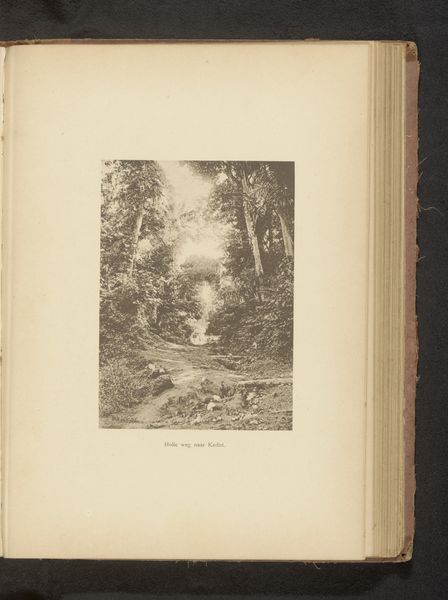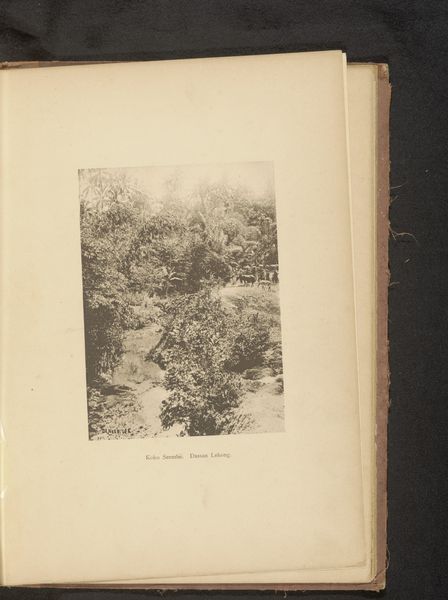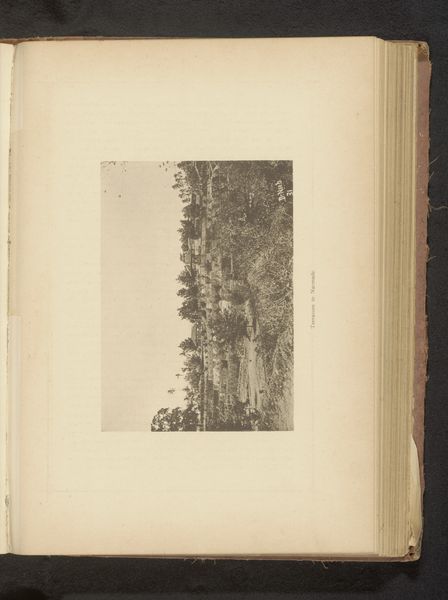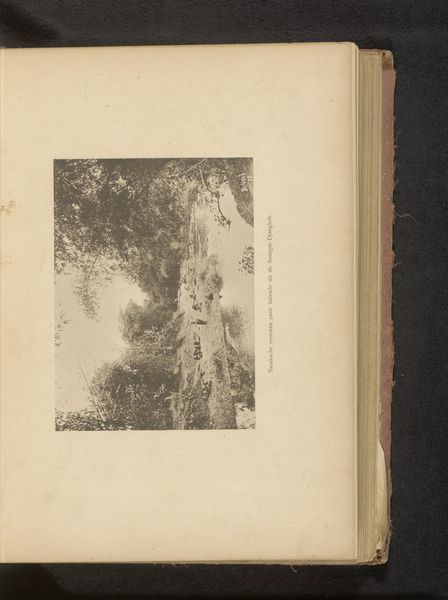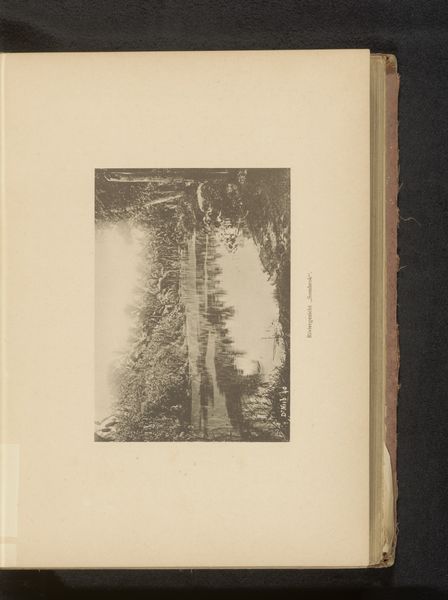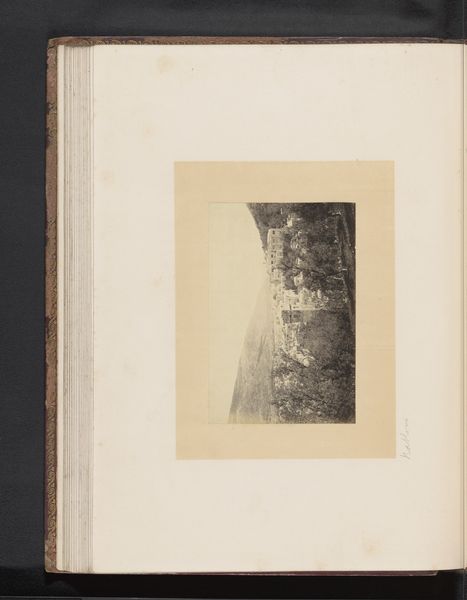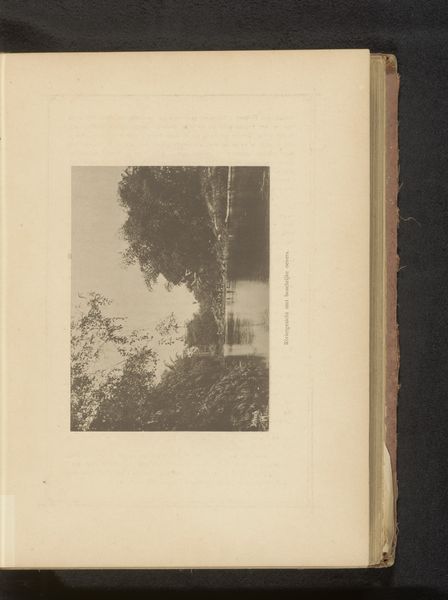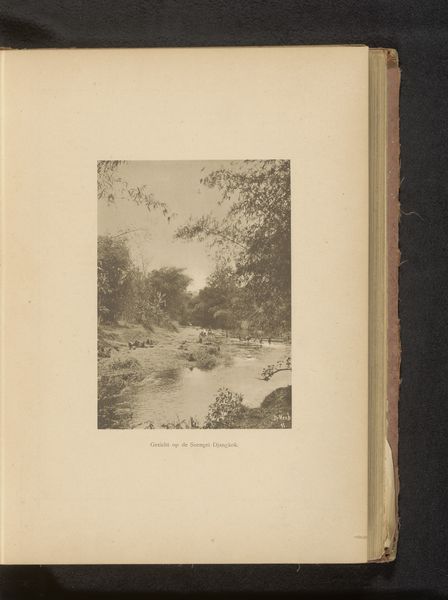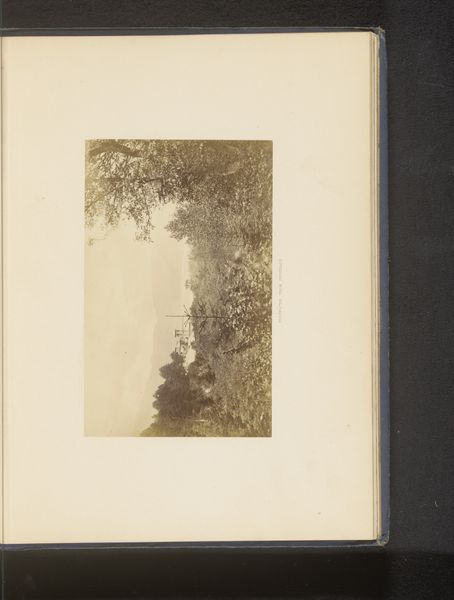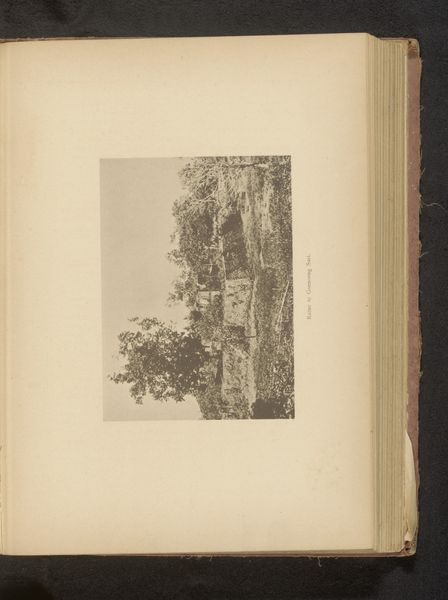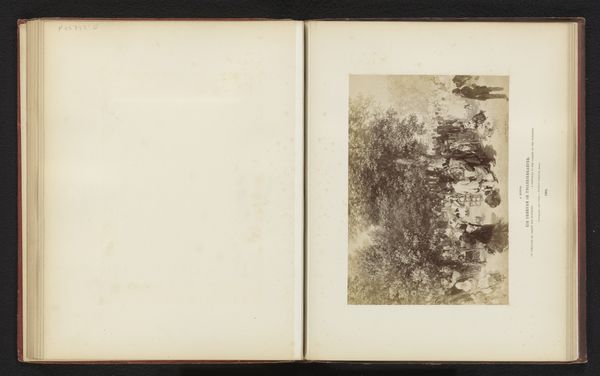
Gezicht op een onbekende Europese man met een geweer aan de oever van een rivier before 1897
0:00
0:00
photography
#
pictorialism
#
landscape
#
photography
#
watercolor
#
realism
Dimensions: height 166 mm, width 114 mm
Copyright: Rijks Museum: Open Domain
Curator: Here we have "View of an Unknown European Man with a Rifle on the Bank of a River," a photograph dating from before 1897 by Christiaan Johan Neeb. Editor: The figure, almost spectral in the misty landscape, dominates the immediate sense of stillness and impending, maybe subtle, violence with the introduction of the rifle. It gives an otherwise serene image an undertone of colonial assertion. Curator: That’s an astute observation. Neeb’s work often plays with these tensions. Given that he worked in the Dutch East Indies, it's key to situate this landscape within a broader colonial framework. How does this single figure with a rifle function as a symbol of power? Editor: It's impossible to ignore the social hierarchies implied by that presence. The romantic, painterly style - almost like watercolor - clashes jarringly with the implied power dynamics. It reflects how colonial narratives aestheticized their dominion through art. What does it mean for Neeb, as a white man in the colony, to present this tableau? Is he complicit? Is he trying to be critical? Curator: This question is fascinating. The "pictorialist" approach in the photo— the soft focus, the careful composition, aims for an idealized vision of nature. But to inject that armed figure... it's an imposition. Perhaps Neeb is revealing something of the veiled aggression underpinning colonial projects. Editor: I see Neeb perhaps gesturing towards the fraught relationship of the colonialist figure as separate from or yet belonging to, a nature or place, as reflected in the water mirroring the natural surroundings, with the human reflection disturbing the otherwise pristine. Curator: Thinking about the viewers and institutions of the time is vital here. This image would have circulated within specific power structures, reinforcing or perhaps subtly questioning existing hierarchies through a public role. Editor: Indeed. Examining its role in exhibitions, its reception in art journals, helps us understand the socio-political conversations it participated in at the time, and of course, what its contemporary legacy tells us now. Curator: I think we’ve begun to untangle the intricate layers within Neeb's photograph. Considering his work in light of today's conversations can illuminate colonial practices and their lasting effect through public imagery. Editor: This brief encounter highlights how analyzing historical photography challenges us to question dominant perspectives and grapple with uncomfortable histories. It reveals much about both past and present.
Comments
No comments
Be the first to comment and join the conversation on the ultimate creative platform.
